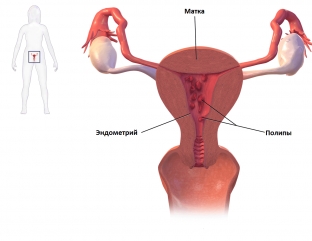Intrauterine pathology accounts for a huge percentage of all gynecological diseases that are diagnosed annually in women of various ages. Intrauterine pathology includes some congenital malformations of the uterus, foreign bodies and endometrial hyperplastic processes. The last group of pathologies requires special attention of practicing gynecologists, since diseases of this group can lead to malignant degeneration of endometrial tissues, which is their main danger. Read more about endometrial hyperplastic processes at estet-portal.com.
The main types of endometrial hyperplastic processes
Hyperplastic processes of the endometrium include three types of pathological conditions: endometrial hyperplasia, endometrial polyps and precancerous endometrial condition.
All these pathologies, if they are not detected in time or treated ineffectively, can degenerate into malignant neoplasms of the uterus. The pathology of the endometrium is not always manifested by characteristic symptoms, which is why the pathological process can be detected in the later stages. To avoid this, women of reproductive and older age should undergo preventive gynecological examinations in a timely manner.
Endometrium:
- endometrial hyperplasia: characteristics and main properties;
- endometrial polyps: classification and main properties;
- morphological signs of precancerous conditions of the endometrium.
Hyperplasia of the endometrium: characteristics and main properties
Endometrial hyperplasia is a histological concept that includes:
- excessive growth of the endometrium;
- structural changes in his glands;
- lack of division into compact and spongy layers;
- violation of the correct distribution of glands in the stroma.
In most cases, the functional layer of the mucous membrane of the body of the uterus undergoes hyperplastic changes, much less often changes occur in the basal layer. The main histological signs of endometrial glandular hyperplasia are an increase in the number of glands, a change in their shape - the glands expand, as well as an increase in the ratio of stromal and glandular components in the absence of cytological atypia. With regard to the malignant transformation of the endometrium with its hyperplasia, the following is known: simple hyperplasia without atypia degenerates into cancer in about 1% of cases, complex without atypia - almost 3 times more often.
Endometrial polyps: classification and main properties
Endometrial polyps are the most common endometrial hyperplastic process, occurring in 25% of cases. Polyps are benign pedunculated lesions, the hallmark of polyps, which become malignant in about 2-3% of cases. Depending on the histological structure, polyps can be glandular, glandular-fibrous, fibrous and adenomatous. Glandular polyps are most often diagnosed in women of reproductive age, glandular-fibrous - in the period of pre- and perimenopause, and fibrous and fibro-glandular - in postmenopause. Adenomatous polyps are characterized by intense proliferation of glands and their epithelium with high mitotic activity and atypia of glandular cells.

Morphological signs of precancerous conditions of the endometrium
Endometrial precancer includes atypical hyperplasia and adenomatous endometrial polyps.
Without treatment, simple atypical hyperplasia degenerates into cancer in 8% of patients, and complex atypical hyperplasia in 29%. The main morphological features of endometrial atypia are:
- an increase in the number of glands located close to each other;
- 2-4 rows of glandular cylindrical epithelium with the formation of papillary outgrowths in the direction of the uterine glands;
- presence of hyperchromic nuclei with uniform or uneven distribution of chromatin and its clumps along the periphery;
- high mitotic activity;
- basophilic or oxyphilic cytoplasm, depending on the degree of atypia;
- presence of edematous stroma;
- uneven distribution of blood vessels.








Add a comment